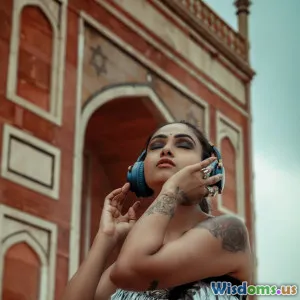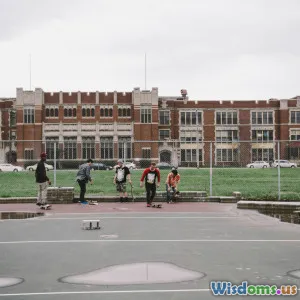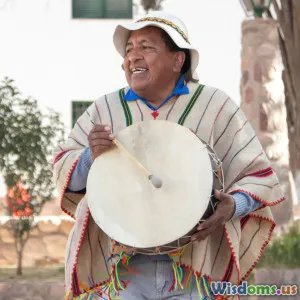
Understanding Cultural Exchange in Art
7 min read Discover how cultural exchange in art bridges societies, inspiring innovation and mutual understanding through shared creativity. (0 Reviews)
Understanding Cultural Exchange in Art
Art has long been humanity’s universal language, transcending borders and time to communicate ideas, emotions, and stories. But beyond individual expression, art serves as a remarkable vehicle for cultural exchange — a dynamic process where artistic ideas, techniques, motifs, and philosophies flow between diverse societies. This relationship not only enriches creativity but also fosters empathy, dialogue, and global connectedness. In this article, we explore the multifaceted concept of cultural exchange in art, revealing its historical roots, mechanisms, and contemporary significance.
Introduction: The Art of Crossing Borders
Imagine stepping into a painting or sculpture that tells not just the story of one community but intertwines symbols and styles from continents apart. This interweaving is the essence of cultural exchange in art — an ongoing dialogue that connects cultures through shared aesthetics and innovation. The impact of this exchange challenges notions of originality, showing that creativity often blossoms at the crossroads of cultures.
The Historical Roots of Cultural Exchange in Art
Cultural exchange in art is far from a modern phenomenon. History provides countless examples where civilizations influenced each other through art.
Ancient Connections: The Silk Road
Over 2,000 years ago, the Silk Road facilitated rich artistic exchange between East and West. Chinese porcelain inspired Islamic pottery, while Central Asian motifs appeared in Byzantine mosaics. For instance, Chinese silk patterns influenced Persian carpet designs, contributing to the intricate patterns still admired today.
Renaissance Europe: A Global Melting Pot
The Renaissance was significantly shaped by the influx of ideas from the Islamic world and classical antiquity. Techniques such as linear perspective bear roots in earlier Arab scholars’ work, and the artistic innovations in Europe were also influenced by trade with Asia and the Middle East. The Renaissance master Leonardo da Vinci reportedly studied devices and innovations from various cultures, exemplifying how cross-cultural curiosity can fuel artistic breakthroughs.
Mechanisms of Cultural Exchange in Art
How does cultural exchange actually occur? This interplay encompasses several key channels:
Trade and Travel
Merchant routes and explorers often acted as conduits for artistic exchange. For example, when British colonialists reached India, they encountered richly illustrated Mughal miniatures, which inspired Western painters and printmakers. Similarly, African artifacts brought to Europe catalyzed new art movements like Cubism — Picasso famously cited African masks as pivotal influences.
Migration and Diaspora
Artists moving between countries introduce their cultural heritage into new environments, fostering hybrid styles. The Harlem Renaissance in the early 20th century, for example, reflected African-American artists blending African cultural roots with contemporary American themes, profoundly affecting literature, visual arts, and music.
Technological Innovations
Advancements in media and communication amplify cross-cultural artistic dialogue. The rise of internet platforms, virtual galleries, and digital art tools allow artists globally to collaborate and reach wider audiences instantaneously, democratizing cultural exchange more than ever before.
Case Studies: Cultural Exchange Impacting Artistic Movements
To appreciate the concrete influence of cultural exchange, consider these pivotal examples:
Japonisme in Western Art
In the late 19th century, Western artists like Vincent van Gogh and Claude Monet incorporated elements from Japanese ukiyo-e prints, such as flat color planes and unique perspectives. This fascination led to new aesthetics in Impressionism and Post-Impressionism, transforming the Western art narrative.
Afro-Brazilian Art
Brazil’s art scene showcases a remarkable blend stemming from African, Indigenous, and Portuguese influences. Artists like Carybé have merged Afro-Brazilian religious symbols with contemporary art, championing cultural identity and social messages that resonate worldwide.
Contemporary Global Collaborations
Events like the Venice Biennale highlight how artists from different continents reinterpret global issues through culturally diverse lenses. For instance, Nigerian-British artist Yinka Shonibare uses Dutch wax fabrics — economically linked from Indonesia to Africa — in sculptures that examine colonial histories and globalization.
Why Cultural Exchange Matters in Art Today
Encourages Innovation
Cross-cultural influences break artistic boundaries by combining techniques, themes, and aesthetics in novel ways. This blend catalyzes innovation, as exhibited by genres like Afrobeat music or street art threads inspired by multiple cultures.
Promotes Empathy and Understanding
Artworks that reflect intercultural exchange open viewers to perspectives beyond their own, enhancing cultural awareness and breaking down prejudices. This empathetic connection is crucial amidst global tensions and cultural misunderstandings.
Challenges Artistic Ownership and Authenticity
Cultural exchange also raises important ethical questions about appropriation versus appreciation. When artists borrow from other cultures, respectful, informed engagement is necessary to honor the source communities and avoid exploitation.
Conclusion: A Call to Embrace Artistic Cross-Pollination
Cultural exchange in art is not just a passive transmission of aesthetics; it is an active, transformative experience that shapes identities and societies. From ancient Silk Road influences to today's virtual art collaborations, cultural intermingling enriches human creativity and unity. As global citizens and art lovers, embracing this exchange invites us to celebrate diversity, foster dialogue, and inspire new horizons of expression.
In the vibrant tapestry of world art, every thread tells a story of connection. Understanding and honoring cultural exchange equips us all to appreciate the shared human spirit that art uniquely reveals.
Rate the Post
User Reviews
Popular Posts





















